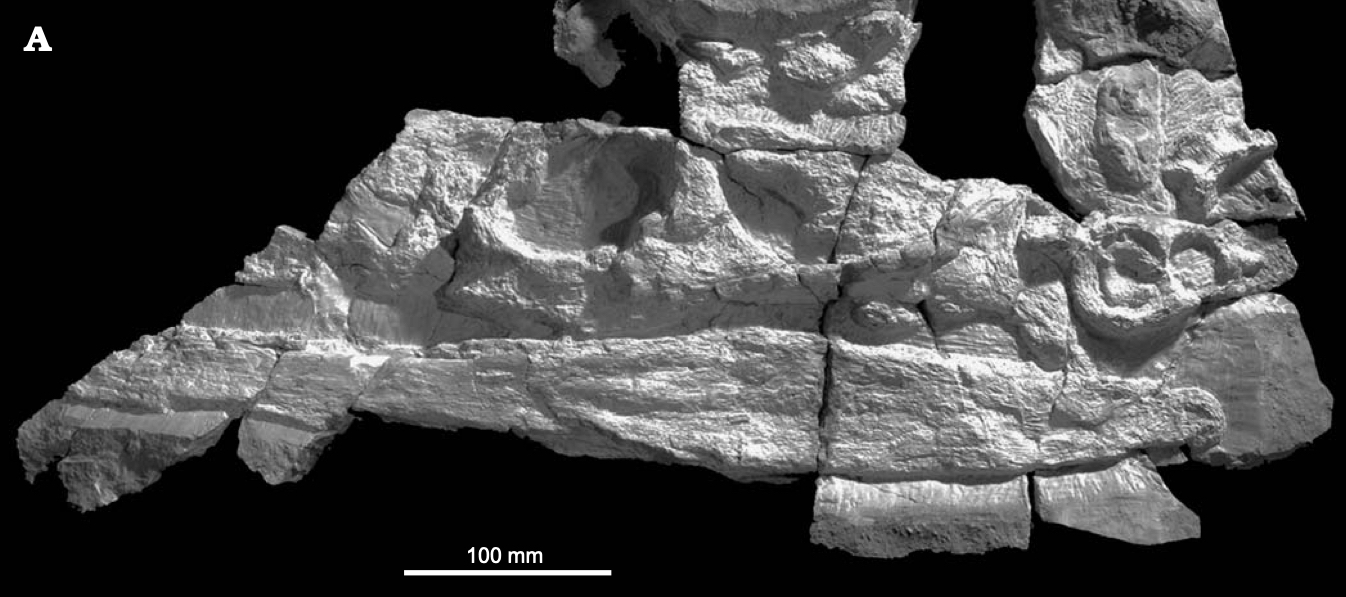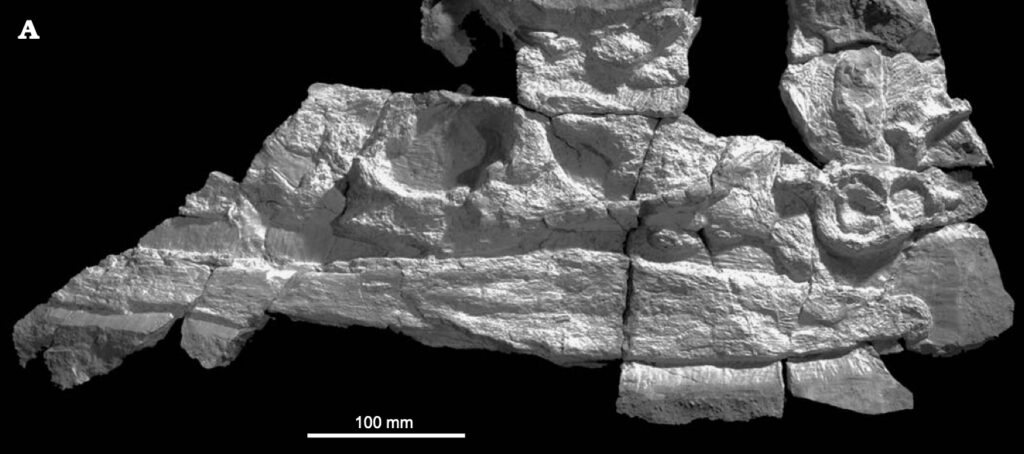Anguanax

A. zignoi
Anguanax is the first articulated plesiosaur ever found in Italy. It is a basal thalassophonean pliosaur from the Late Jurassic (middle Oxfordian). The type and only known specimen (MPPL 18797) of Anguanax was originally described as an indeterminate pliosaurid (Cau and Fanti 2014), but was subsequently named after reanalysis by the same authors the following year (Cau and Fanti 2015).
It consists of a partial skull and mandible; 32 isolated teeth; cervical, dorsal and caudal vertebrae; right scapula and coracoid; partial left humerus; left radius; left ulna; three left carpals; a partial pelvis; femur; two epipodials; and isolated metapodials and phalanges. The fossil was excavated in the 1980s from an active quarry at the Kaberlaba locality near Asiago, Veneto, North-Eastern Italy, and moved to the Museo Paleontologico e della Preistoria “Pietro Leonardi” (MPPL) in Ferrara.
The name derives from Anguana, “an aquatic creature with both fish and reptilian features present in the mythologies from North Eastern Italy; and –anax, Greek for ‘tribal and military leader’. The species name honours Achille de Zigno (1813–1892)” (Cau and Fanti 2015, p.4).
Anguanax zignoi is diagnosed by two unique characters (autapomorphies): “palpebral with orbital projection placed at mid-height of orbital anterior margin” and “posteroventral process of coracoid developed as a distinct trapezoid not reaching laterally the glenoid level, and with straight posterior margin directed posterolaterally”. It also has a unique combination of other characters: “posterior margin of orbital opening with a stepped posteroventral corner; low-coronoid eminence; retroarticular process main axis directed posteriorly; axial neural spine narrow; ventral surface of anterior cervical centra bearing a low and broad midline ridge; rib facets placed dorsally on caudal centra, but not extended on neural arch” (Cau and Fanti 2015, p.4).

